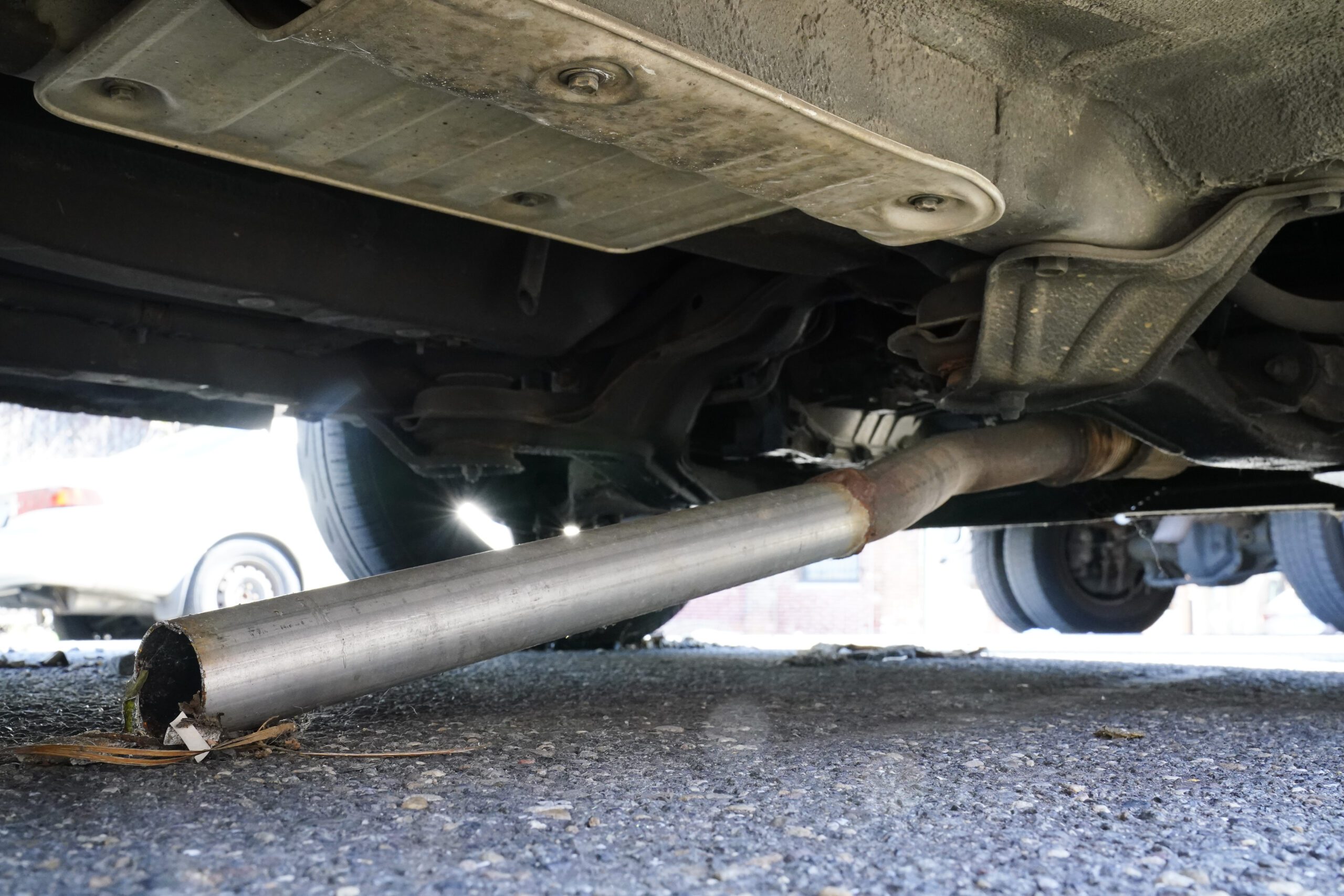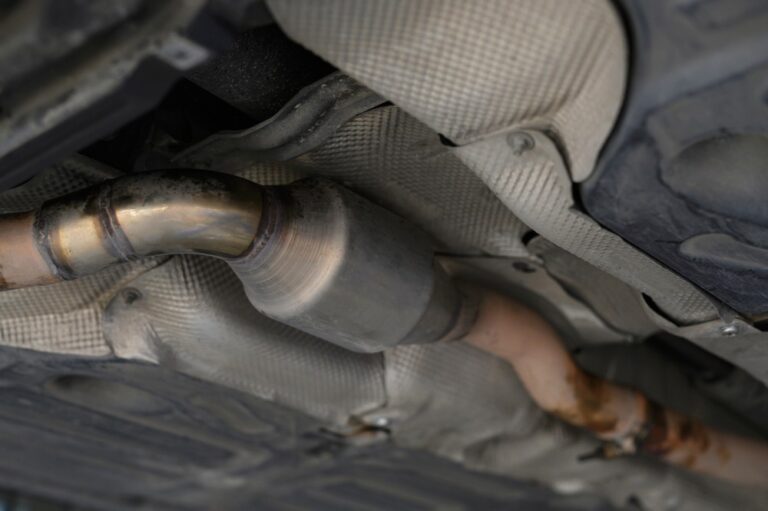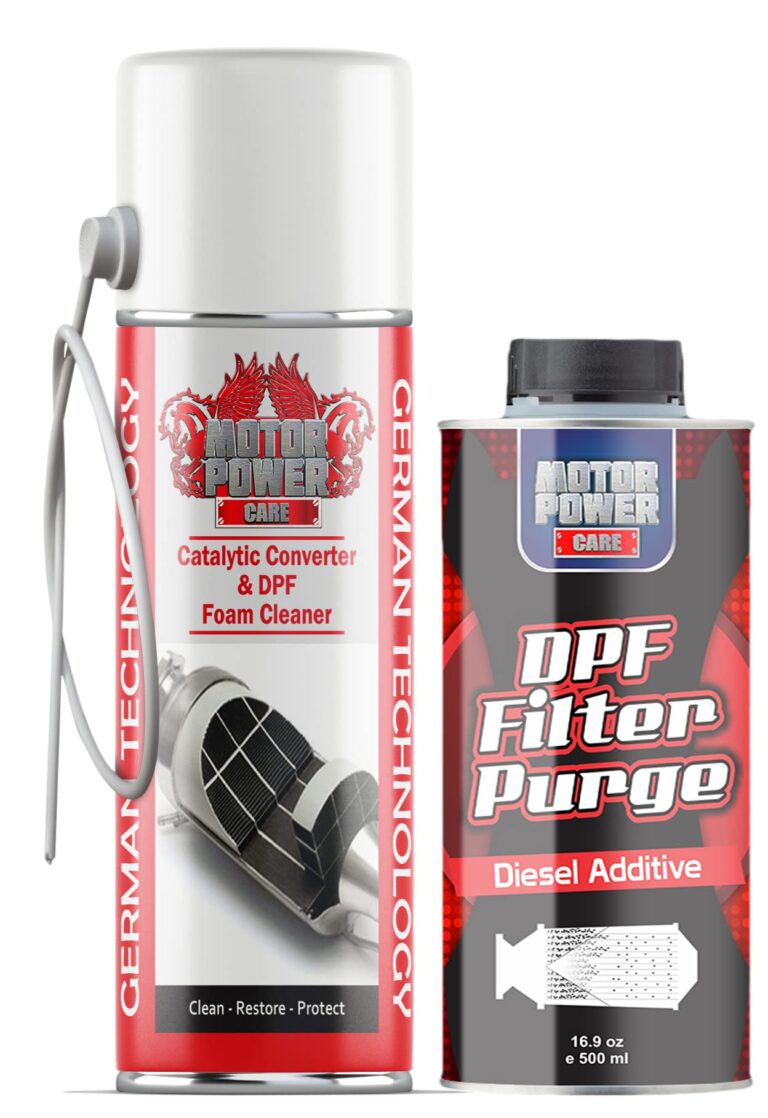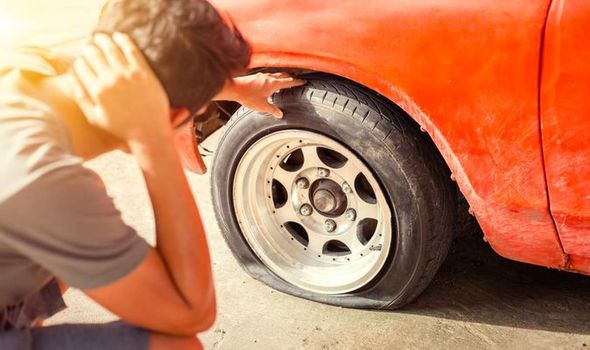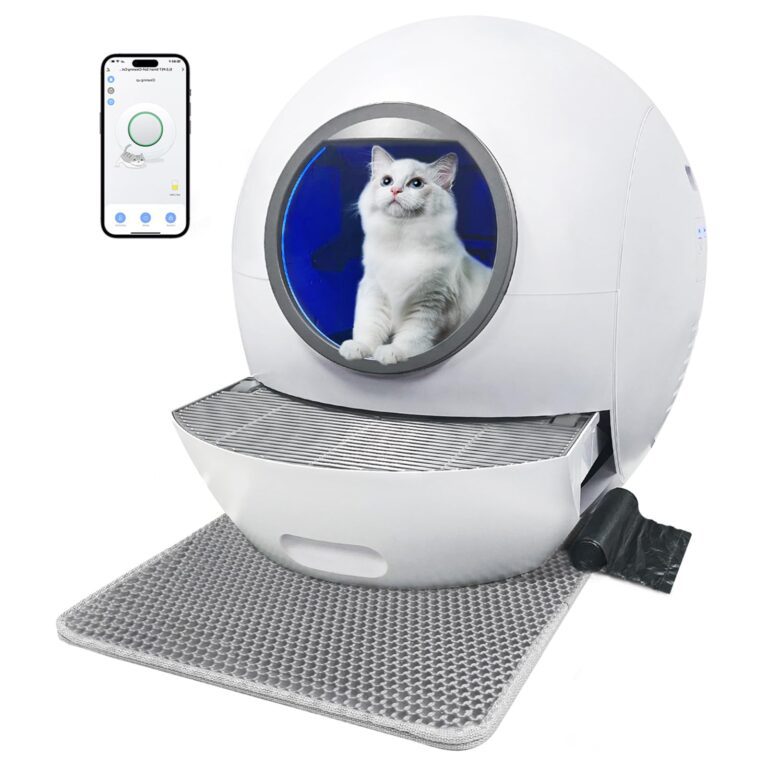How Long Does It Really Take to Replace a Muffler?
Replacing a muffler typically takes about 1 to 2 hours. Now, let’s delve into the details of how long it takes to replace a muffler.
A vehicle’s muffler is a critical component of the exhaust system that helps reduce noise and control emissions. Over time, mufflers can become worn out, rusted, or damaged, requiring replacement. The duration for this task may vary depending on several factors, including the make and model of the vehicle, the type of muffler being installed, and the mechanic’s expertise.
In general, a skilled mechanic can replace a muffler within 1 to 2 hours, though it could take longer if additional repairs or modifications are necessary.
Understanding The Purpose Of A Muffler
The purpose of a muffler in your vehicle is not just to reduce noise pollution, but it also plays a vital role in the overall performance of the vehicle. A muffler is designed to minimize the noise produced by the engine, specifically the exhaust gases that are expelled from the engine cylinders. By using specialized chambers and baffles, the muffler allows the exhaust gases to flow through while reducing the intensity of the sound waves produced.
Reducing noise pollution is one of the key benefits of a muffler. It helps in maintaining a peaceful environment both inside the vehicle and for those around it. Excessive noise can not only be irritating, but it can also have negative health effects on individuals and contribute to noise pollution in urban areas.
Moreover, a properly functioning muffler also contributes to the overall performance of your vehicle. It helps in maintaining the appropriate back pressure in the exhaust system, which is crucial for the engine’s efficiency. It also ensures that the exhaust gases are properly expelled from the engine, preventing any backflow that could hamper the performance and efficiency of the engine.
Signs Of A Damaged Muffler
Unusual noises and vibrations are common warning signs of a malfunctioning muffler. If you notice any loud roaring or rattling sounds coming from the exhaust system, it could indicate a problem with the muffler. Vibrations and excessive shaking of the vehicle, particularly in the floorboard or steering wheel, can also be indications of muffler issues. It is important to pay attention to these signs as ignoring them can lead to further damage to the muffler and other components of the exhaust system.
Diagnosing The Problem
Inspecting and assessing the condition of the existing muffler is the first step in determining whether a replacement is necessary. Start by visually inspecting the muffler for any visible damage such as rust, holes, or cracks. Check for any loose or detached components as well. Next, examine the exhaust system for any signs of leaks, such as sooty residue or unusual noises. These could indicate a problem with the muffler.
If the muffler appears to be in good condition, further evaluation may be needed. Conduct a sound test by starting the vehicle and listening for any unusual noises. Excessive noise or rattling could indicate a muffler issue. Additionally, pay attention to the exhaust fumes and note any unusual smells or excessive smoke.
If the inspection reveals significant damage or any of the identified issues, it is likely time to consider replacing the muffler. Consulting a professional mechanic for a more thorough evaluation is recommended to ensure an accurate diagnosis and appropriate solution.
Gathering The Necessary Tools And Equipment
Gathering the Necessary Tools and Equipment
| Tools | Equipment |
| Screwdriver set | Wire brush |
| Socket set | Pliers |
| Wrench set | Torch |
| Jack and jack stands | Gloves and safety glasses |
Understanding the tools required for the replacement process
Gathering the essential equipment for a successful muffler replacement is crucial. You will need a screwdriver set to remove screws and bolts, and a socket set to loosen and tighten nuts. Additionally, a wrench set is required for various purposes throughout the replacement process. To clean any rust or debris, a wire brush will come in handy. For cutting or twisting wires, a set of pliers is essential. Using a torch can make the process easier by providing better visibility. It is important to have a jack and jack stands to safely elevate the vehicle. Lastly, don’t forget to wear gloves and safety glasses for protection.
Removing The Old Muffler
Removing the Old Muffler
When replacing a muffler, it is important to follow proper step-by-step instructions to ensure a safe and efficient removal process.
Step-by-step instructions for removing the damaged muffler:
| Step | Instructions |
|---|---|
| 1 | Ensure the vehicle is parked on a level surface and the engine is cool. |
| 2 | Wear protective gloves and goggles before beginning the removal process. |
| 3 | Locate the muffler under the vehicle and inspect it for any signs of damage or corrosion. |
| 4 | Using a wrench or socket set, loosen and remove the bolts or clamps securing the muffler to the exhaust system. |
| 5 | Slowly and carefully slide the muffler off the exhaust pipe, taking care not to damage any other components. |
| 6 | Dispose of the old muffler properly and inspect the exhaust pipe for any debris or blockages. |
Following these instructions will ensure a safe and effective removal of the old muffler. Remember to always prioritize safety and consult a professional if you are unsure of any steps in the process.
Choosing A Replacement Muffler
Choosing a Replacement Muffler
When it comes to replacing your muffler , it’s important to choose the right one to ensure optimal performance and functionality. Several factors need to be considered to make the best decision for your vehicle.
Understanding the different types and configurations available
Before purchasing a replacement muffler, it is essential to understand the different types and configurations available in the market. Some common muffler styles include chambered, turbo, and straight-through mufflers. Each type offers a unique sound and performance characteristics, so it’s crucial to consider your preferences and desired outcomes.
Additionally, the muffler’s size, shape, and material can significantly impact its performance. Stainless steel mufflers, for example, offer durability and resistance to corrosion. The design of the muffler can affect your vehicle’s horsepower, torque, and fuel efficiency, so it’s essential to do thorough research or consult with a professional mechanic.
Choosing a replacement muffler is a significant decision that should not be taken lightly. Take into consideration your vehicle specifications, local noise regulations, and personal preferences to ensure the best muffler choice for your car.
Installation Of The New Muffler
Installing a new muffler is a relatively straightforward process that can be completed in a relatively short amount of time. However, the exact time it takes to replace a muffler can vary depending on a few factors. Firstly, the type of vehicle plays a role in the complexity of the installation. Different vehicles have different muffler designs and mounting configurations, which can affect the ease of replacement. Additionally, your level of experience with automotive repairs can also contribute to the time it takes. Those who are more experienced may be able to complete the installation quicker than those who are less experienced.
When it comes to fitting the replacement muffler, there are a few tips and techniques that can help ensure a proper installation. Firstly, it is important to securely fasten the muffler in place. This can be done using the provided mounting brackets or hangers, making sure they are tightened securely to prevent any rattling or movement. Additionally, ensuring a tight seal between the muffler and the exhaust system is essential to prevent any leaks. This can be achieved by using exhaust clamps or gaskets to create a tight connection.
Factors Influencing The Duration
How long it takes to replace a muffler can vary depending on several factors. The make and model of the vehicle plays a significant role in the duration of the muffler replacement process. Certain vehicles require more intricate procedures, resulting in a longer time frame for completion. Additionally, the complexity of the muffler replacement process itself can impact the time it takes. Some vehicles may have mufflers that are easier to access and replace, while others may require more extensive disassembly. In some cases, additional repairs or adjustments may be needed, further extending the time needed for the replacement. It is always best to consult with a professional mechanic to get an accurate estimate for the duration of muffler replacement for your specific vehicle.Average Time Estimates For Muffler Replacement
html| Professional Mechanics | DIY Timelines |
|---|---|
| Typically, professional mechanics can replace a muffler in about 1 to 2 hours. However, the exact timeframe may vary depending on various factors such as the make and model of the vehicle, accessibility to the muffler, and any additional repairs required. | For individuals opting to replace the muffler themselves, the time required can vary significantly based on their skill level and experience. Novice DIYers may take anywhere from 2 to 4 hours to complete the task, especially if they are new to working on vehicles. Those with more experience and familiarity may be able to finish the job in about 1 to 2 hours. |
Tips For Efficient Muffler Replacement
If you’re wondering how long it takes to replace a muffler, it’s helpful to follow some tips for an efficient replacement process. One strategy to minimize time and streamline the process is to prepare in advance. Make sure you have all the necessary tools and equipment ready before starting the replacement. It’s also important to do thorough research to understand the specific steps involved in replacing a muffler for your particular vehicle make and model. This will help you become familiar with the process and anticipate any challenges that may arise. Another way to save time is to work in a well-equipped and organized workspace. Clear any clutter and have a clean area to work in, ensuring you have easy access to the necessary parts and tools. By considering these strategies, you’ll be well-prepared to efficiently replace a muffler without unnecessary delays.
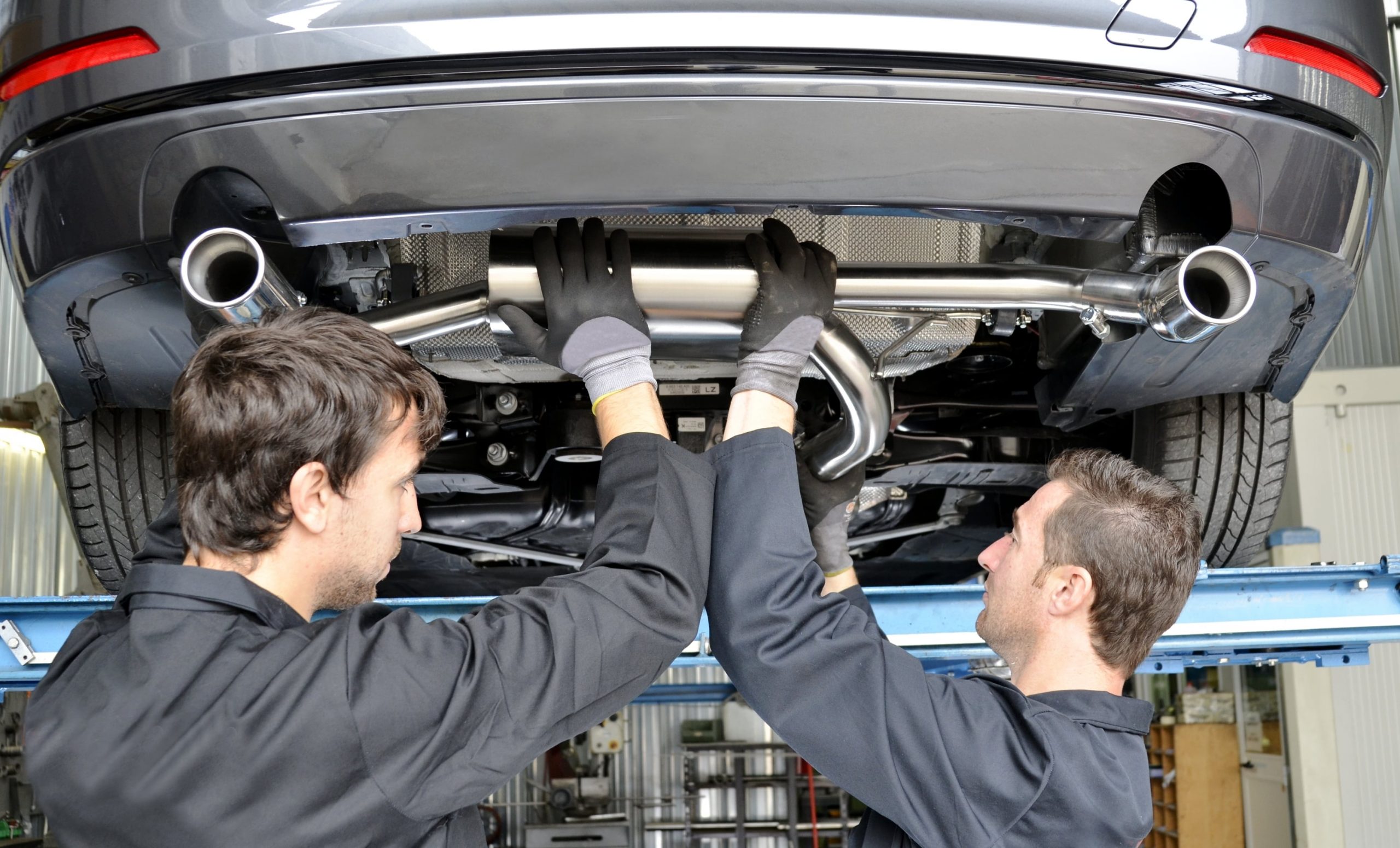
Credit: www.parkmuffler.com
Frequently Asked Questions Of How Long Does It Take To Replace Muffler
Is Replacing A Muffler Easy?
Replacing a muffler can be relatively easy, depending on your vehicle and mechanical skills. It involves removing the old muffler and installing a new one, using basic hand tools. However, if you are unsure, it is recommended to have a professional mechanic handle the task.
How Long Does It Take To Install A Muffler System?
On average, it takes about 1-2 hours to install a muffler system. The installation time may vary depending on the car model and the complexity of the system. It is recommended to consult a professional mechanic for accurate time estimation.
Is It Okay To Drive With A Bad Muffler?
Driving with a bad muffler is not recommended. It can lead to increased noise levels, potential damage to the exhaust system, and even legal issues due to noise pollution regulations. Get it fixed by a professional to ensure a smooth and compliant driving experience.
How Long Should A Muffler Last?
A muffler can typically last around 4 to 6 years depending on various factors such as driving conditions, maintenance, and quality of the muffler. It is recommended to have regular inspections and replace the muffler if there are signs of damage or excessive noise.
Conclusion
Replacing a muffler is a straightforward task that can typically be completed within a few hours by a skilled mechanic. However, the actual time it takes may vary depending on factors such as the make and model of the vehicle, availability of the parts, and the mechanic’s experience.
It is always advisable to consult a professional to ensure a proper and timely muffler replacement. Remember to consider any additional repairs or maintenance that may be needed to ensure the longevity and optimal performance of your vehicle.
